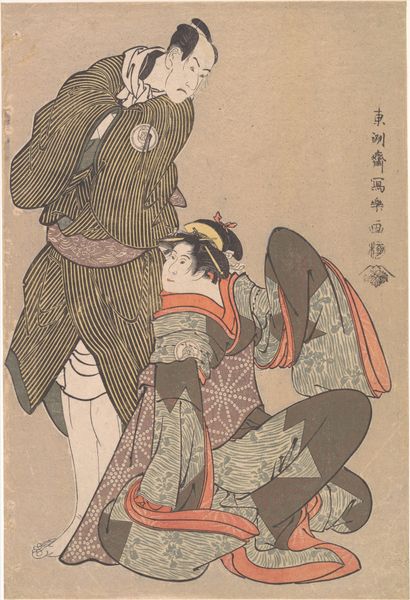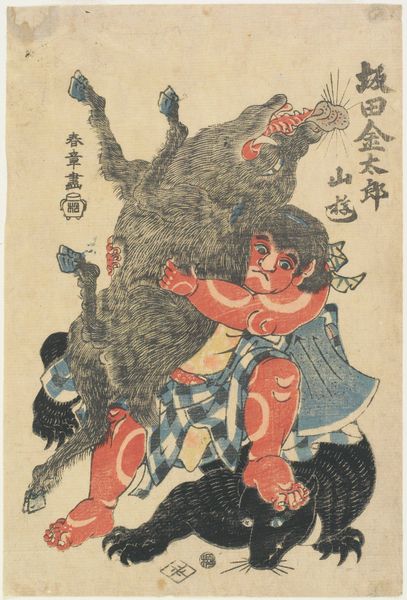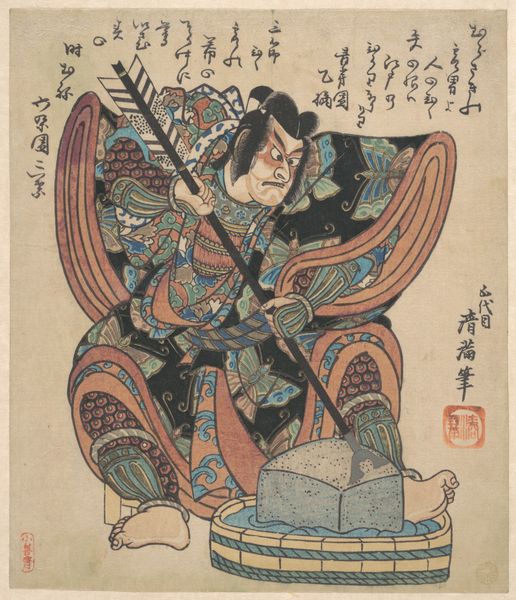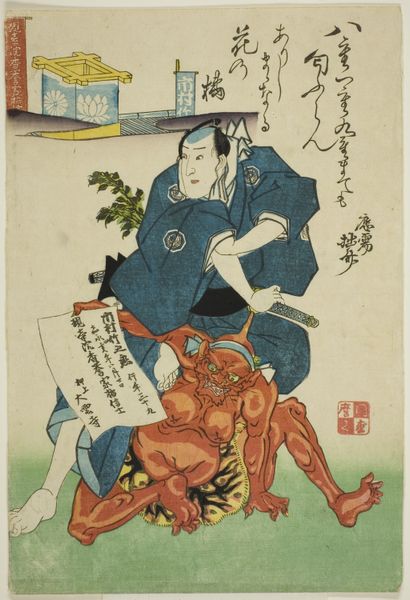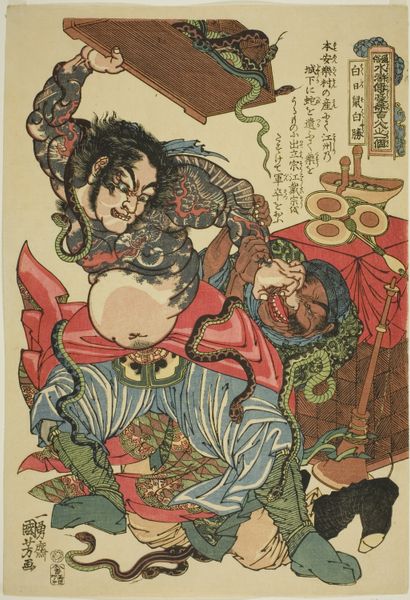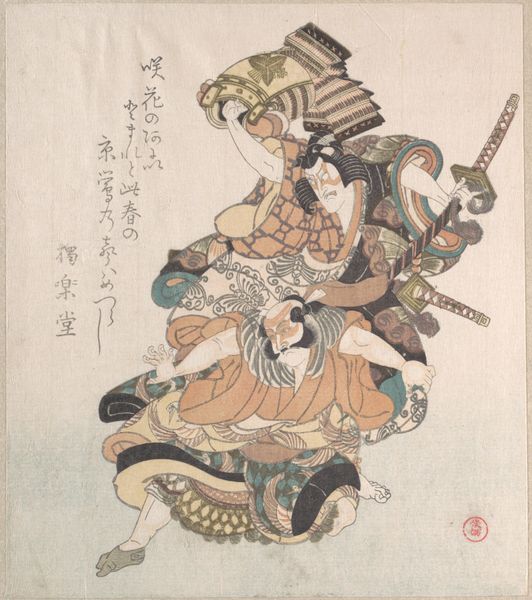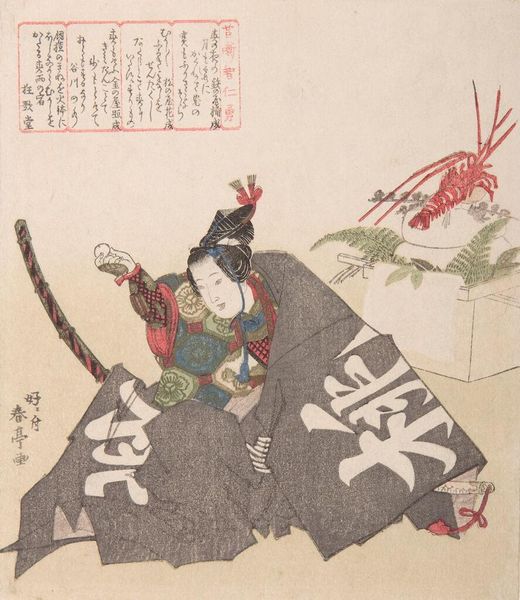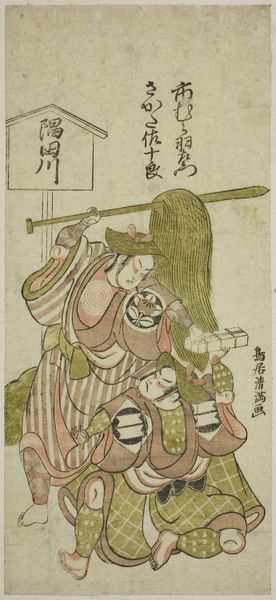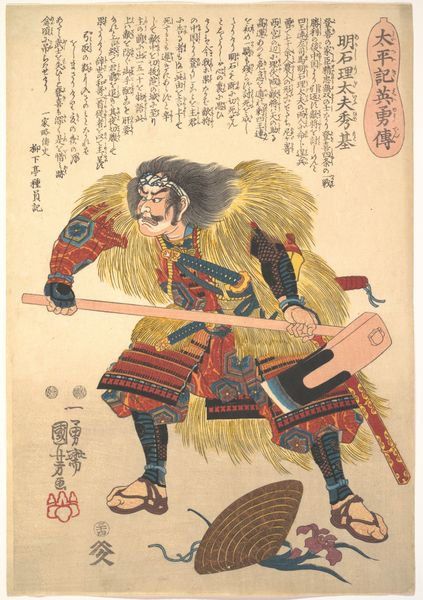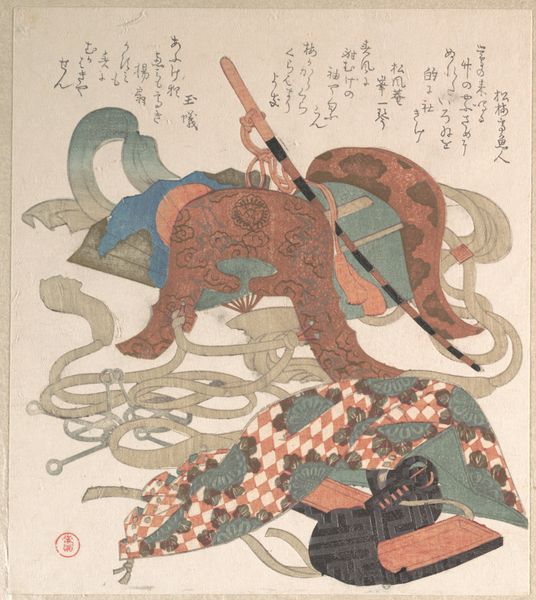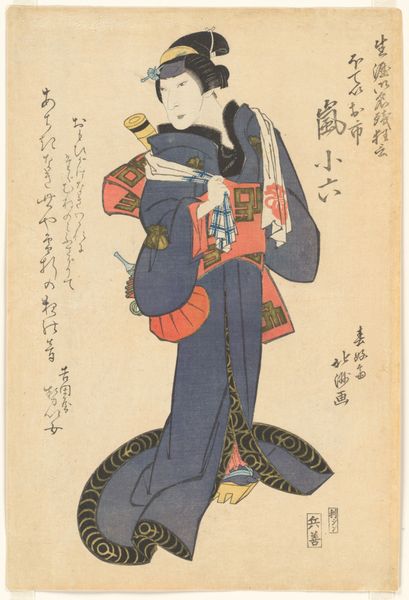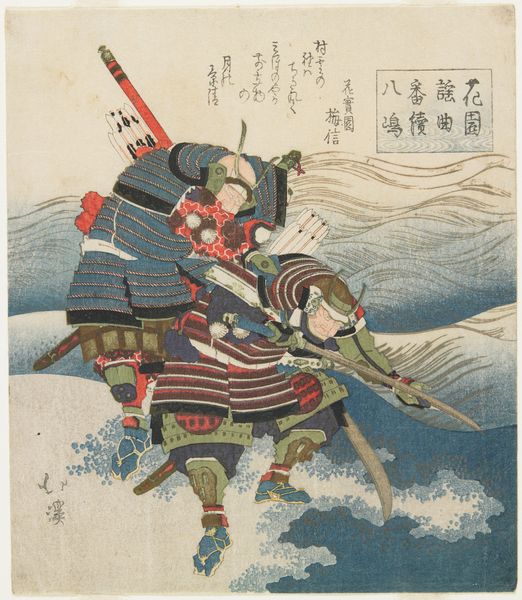
Kintarō Subduing a Raptor with a Large Axe c. 1820s
0:00
0:00
print, woodblock-print
#
water colours
#
narrative-art
# print
#
asian-art
#
ukiyo-e
#
japan
#
figuration
#
woodblock-print
#
watercolor
Dimensions: 8 1/4 × 7 5/16 in. (21 × 18.5 cm) (image, sheet, shikishiban)
Copyright: Public Domain
Curator: What a dynamic image! We're looking at a woodblock print by Kitagawa Tsukimaro titled "Kintarō Subduing a Raptor with a Large Axe," created around the 1820s. Editor: It's immediately striking. Kintarō's bright red skin contrasts sharply with the subdued tones of the bird, drawing my eye directly to the figure's determined expression and sheer brute force. It feels both heroic and… a bit comical? Curator: The artist clearly understands how to use color to guide the viewer. The woodblock printing technique allowed for the mass production of these images, making them accessible to a wide audience. It speaks to a broader market for these heroic tales. I wonder, was it popular amongst women as well? Editor: The contrast between the refined watercolor washes and the bold lines suggests a blurring of boundaries between 'high' and 'low' art, and how societal values shape what kind of production methods we value in artistic circles. Also, that large axe has some very specific ornamentation; what sort of meaning is carried by its production quality, if any? Curator: Definitely! Ukiyo-e prints played a vital role in disseminating popular culture. Kintarō, a folk hero known for his superhuman strength, resonated with the common people. And that ornamental axe surely was an important narrative point the culture understood! These prints circulated ideas about masculinity, bravery, and the power of the individual. Editor: Absolutely. And by placing this powerful, almost monstrous figure—red-skinned and muscular—within a familiar natural setting, the print also negotiates Japan's cultural relationship to the untamed world. It looks both fantastical and very earthly, I wonder what the perception and distribution were. Curator: It is a reminder that art is not made in a vacuum, the circulation is key to understanding how values around folk-tales and their values would make it through to the society at large. Editor: Looking closely at this particular woodblock print encourages me to rethink its place within society—the distribution networks, consumer engagement, how this simple artwork helped communicate and form society's values.
Comments
minneapolisinstituteofart about 2 years ago
⋮
Kintarō is a hero from Japanese folklore; a child of superhuman strength that was raised by a mountain hag on Mount Ashigara. He became friendly with the animals of the mountain, and eventually became a loyal follower of Minamoto Yorimitsu (948-1021). On Boy's Day a Kintarō doll is being put up so that boys will become equally brave and strong. Two original versions exist, each with a poem by a different poet. The first version, illustrated in the surimono catalogue by Richard Kruml from 1989, bears a poem by Takasagotei Matsunari 高砂亭松成. The second version, which is this impression and the one in the New York Public Library, has a poem by Kaseitei Shironari 花盛亭白成. The second version was reprinted in the Meiji period. The reprint lacks the drum emblem of the Taiko-gawa poetry group in the upper left corner. It is illustrated in Carpenter (ed.), Reading Surimono, no. 290, who provides the following translation of the poem:The hands of wind / firmly grasp the scent / of the plum at the peak of bloom, / seizing hold of spring, precious / as a thousand gold pieces. (Saki-michishi / ume no nioi o / kaze no te ni / tsukami-dori suru / senkin no haru).
Join the conversation
Join millions of artists and users on Artera today and experience the ultimate creative platform.
